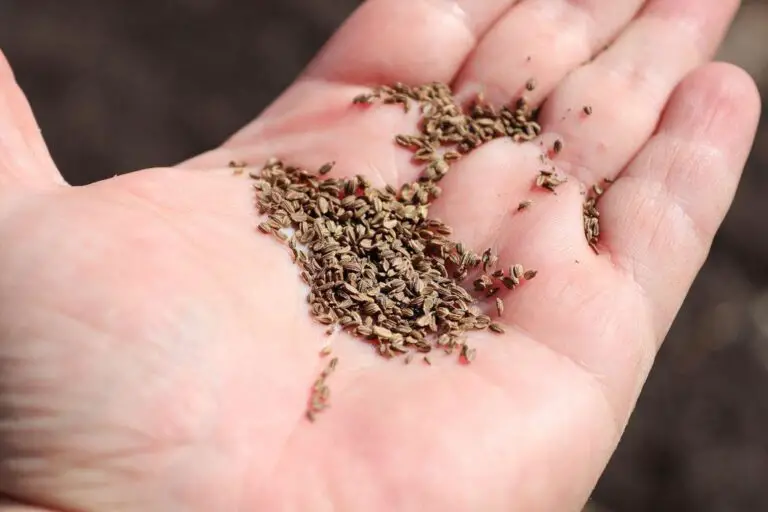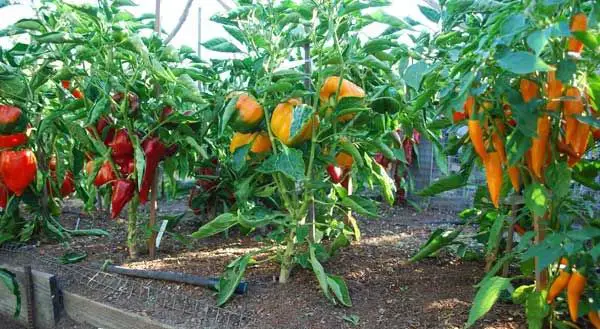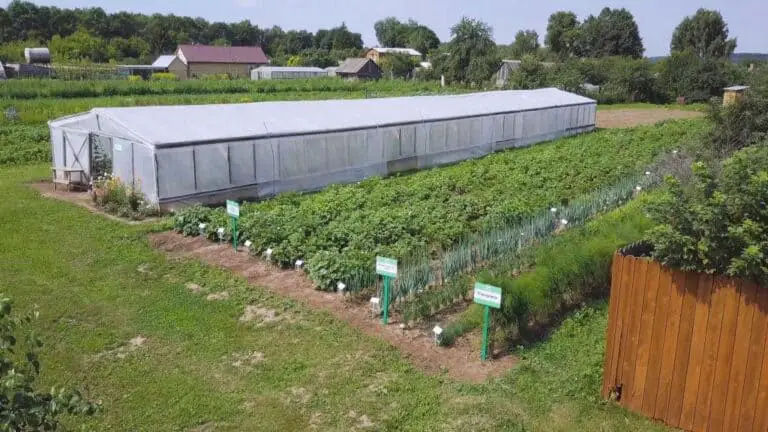Broccoli Plants Falling Over: Common Causes and How to Prevent Them
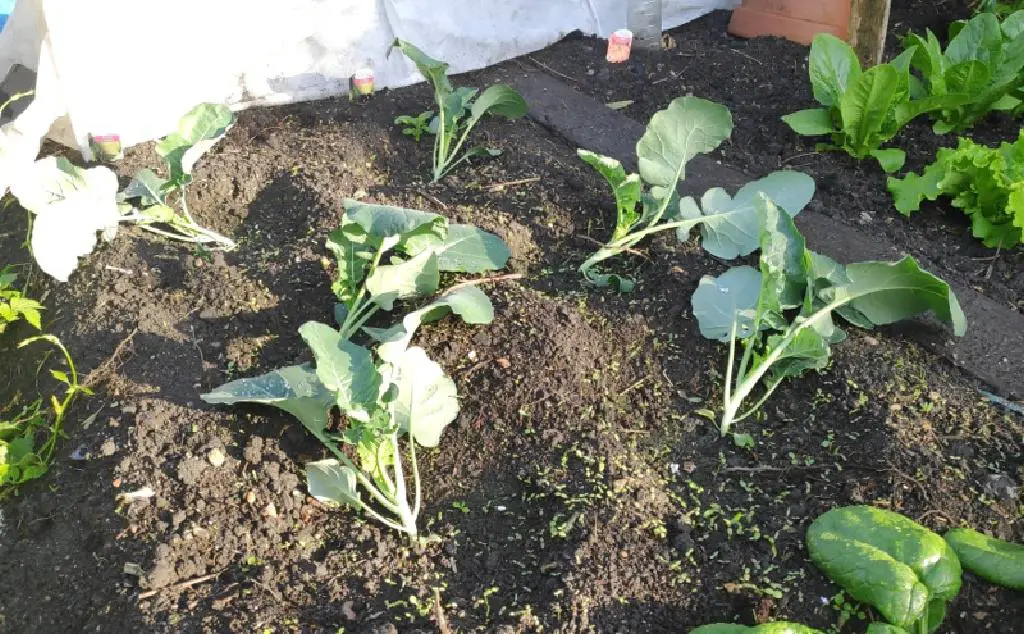
Broccoli plants are a staple in many vegetable gardens, providing a nutritious and delicious addition to our plates. However, it can be disheartening to see your broccoli plants falling over, their once upright and robust stems now drooping and weak.
Fortunately, there are several common causes for this issue, and by understanding them, you can take proactive steps to prevent it from happening in the future.
In this article, we will explore the reasons behind broccoli plants falling over and discuss effective strategies to keep them standing tall and healthy./
Understanding the Structure of Broccoli Plants
To effectively care for your broccoli plants and address issues such as falling over, it is crucial to have a deeper understanding of their structure. Broccoli plants belong to the Brassica oleracea species, which also includes other vegetables like cabbage, cauliflower, and kale. These plants have a distinct structure consisting of various parts, each playing a vital role in their growth and development.
At the base of the broccoli plant is the root system. The roots anchor the plant in the soil and absorb water and nutrients necessary for its survival. They extend deep into the ground, forming a network of fine, fibrous roots that explore the soil for resources. Healthy roots are crucial for the plant’s overall stability and ability to take up essential nutrients, which contribute to strong stem growth.
Above the ground, the broccoli plant develops a sturdy stem that serves as its main support structure. The stem starts off small but elongates as the plant grows. It is composed of nodes, which are points on the stem where leaves and branches emerge.
Read: Does Broccoli Grow in the Ground or Underground?
The stem is covered in a layer of bark, providing protection and rigidity. As the plant matures, the stem becomes thicker and stronger, able to support the weight of the developing broccoli heads.
Emerging from the nodes on the stem are the leaves of the broccoli plant. These leaves play a crucial role in the photosynthesis process, converting sunlight into energy that fuels the plant’s growth. They are typically dark green, broad, and have a slightly waxy texture. The leaves are arranged alternately along the stem, ensuring maximum exposure to sunlight. Healthy and vibrant leaves contribute to the overall vigor of the plant.
As the broccoli plant matures, it begins to form the familiar broccoli heads, or florets. These heads are clusters of undeveloped flower buds tightly packed together. The heads are composed of many tiny, tightly closed flower buds, each with the potential to develop into a yellow flower if left unharvested. The heads are the most desirable part of the broccoli plant, and their development is a key objective for gardeners.
Surrounding the broccoli heads are the protective leaves, known as wrapper leaves. These broccoli leaves enclose and shield the developing heads, providing them with protection from external elements.
The wrapper leaves are usually thick, coarse, and have a bluish-green hue. They act as a natural barrier, guarding the tender florets from excessive sunlight, pests, and diseases. The quality and condition of the wrapper leaves can affect the overall health and appearance of the broccoli heads.
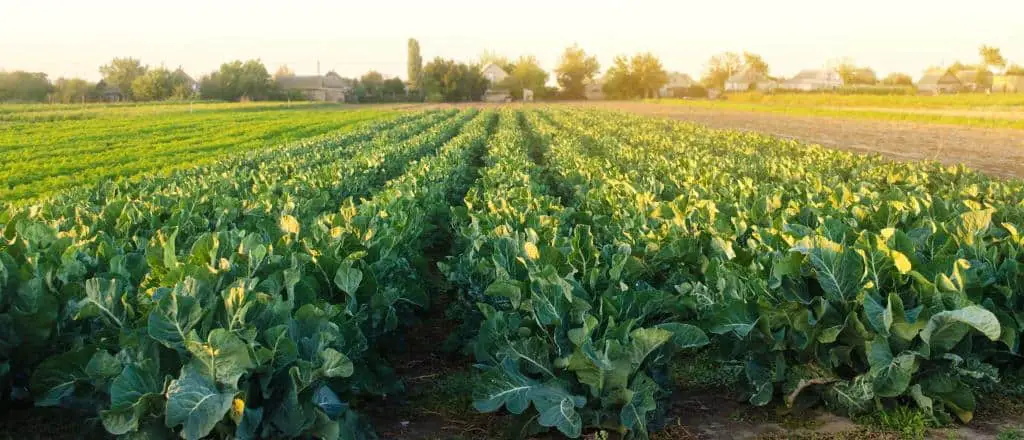
Common Causes of Broccoli Plants Falling Over
1. Weak Stems
One of the primary causes of broccoli plants falling over is weak stems. Broccoli plants, like any other plant, require sturdy stems to support their weight as they grow. Weak stems can result from various factors, such as inadequate nutrition, improper watering, or poor environmental conditions.
When the stems are weak, they struggle to bear the weight of the growing broccoli heads, leading to bending and eventually falling over.
2. Overcrowding
Planting broccoli too close together can lead to overcrowding, which can weaken the plants and cause them to fall over. When broccoli plants are crowded, they have to compete for vital resources like sunlight, water, and nutrients. This competition can result in stunted growth and weak stems, making them more susceptible to falling over.
To prevent overcrowding, ensure that you provide enough spacing between each broccoli plant during the planting process.
3. Nutrient Deficiencies
Broccoli plants require a balanced supply of nutrients to grow strong and healthy. Inadequate or imbalanced nutrient levels can weaken the plants and make them more prone to falling over.
Common nutrient deficiencies that affect broccoli plants include nitrogen, phosphorus, and potassium. Regularly monitor the soil’s nutrient levels and provide appropriate fertilizers or organic matter to ensure your plants receive the necessary nutrients for robust growth.
4. Inadequate Support
Another reason broccoli plants fall over is a lack of proper support. As the broccoli heads grow larger and heavier, they can exert substantial pressure on the stems. Without adequate support, the stems may bend or break under this weight, causing the plants to collapse. Providing support structures such as stakes or cages can help alleviate this issue by offering extra support to the stems and preventing them from bending.
5. Wind Damage
Strong winds can wreak havoc on broccoli plants, particularly if they are not adequately protected. Wind can whip the plants around, causing stress on the stems and leading to their collapse.
If you live in an area prone to high winds, consider planting your broccoli near a windbreak, such as a fence or hedge, to provide some protection. Additionally, using stakes or other support structures can help mitigate the impact of wind on your plants.
Improper Cultivation Techniques and their Impact
Sometimes, improper cultivation practices can inadvertently contribute to the fall of broccoli plants. Awareness of these techniques and their impact is crucial for successful broccoli cultivation. Consider the following factors:
- Deep planting and burying the stems: Planting broccoli seedlings too deeply, especially burying the stems, can weaken the plants’ structural integrity and result in them falling over.
- Inadequate staking or trellising support methods: Failure to provide sufficient support through staking or trellising can leave broccoli plants vulnerable to wind, rain, or their own weight, causing them to topple.
- Neglecting to trim or prune the plants: Neglecting regular trimming or pruning of broccoli plants can lead to excessive foliage growth, increasing the chances of them falling over due to the weight.
- Failure to provide adequate support during growth: As broccoli plants mature, their size and weight increase. If you fail to provide additional support during this growth phase, the plants may collapse under their own weight.
How to Prevent Broccoli Plants from Falling Over
Now that we have explored the common causes of broccoli plants falling over, let’s discuss effective strategies to prevent this issue and ensure your plants thrive:
1. Start with Healthy Seedlings
Healthy seedlings are the foundation for strong and resilient broccoli plants. When selecting seedlings, choose ones that are vigorous, disease-free, and have sturdy stems. You better avoid broccoli seedlings that are leggy, small, and in abnormal form.
By starting with healthy seedlings, you give your plants the best chance to grow strong and avoid falling over later.
2. Provide Adequate Spacing
Proper spacing is crucial for broccoli plants to grow without overcrowding. When planting your seedlings, ensure they have enough room to develop fully. Space them at least 18 to 24 inches apart, allowing ample airflow between the plants. Sufficient spacing reduces competition for resources and promotes healthy growth.
3. Enhance Soil Quality
Healthy soil is essential for the overall well-being of your broccoli plants. Before planting, prepare the soil by incorporating organic matter, such as compost or well-rotted manure, to improve its fertility and structure.
Broccoli plants thrive in well-drained soil with a pH level between 6.0 and 7.0. Regularly test the soil’s pH and nutrient levels and make necessary amendments to ensure optimal conditions for your plants.
4. Provide Proper Nutrition
To prevent nutrient deficiencies, it’s important to provide your broccoli plants with a balanced diet. Before planting, apply a slow-release fertilizer to enrich the soil with essential nutrients. During the growing season, monitor your plants for signs of nutrient deficiencies, such as yellowing leaves or stunted growth, and address them promptly.
Regularly feed your broccoli plants with a nitrogen-rich fertilizer to support healthy stem growth and prevent weakness.
5. Water Wisely
Watering plays a crucial role in maintaining healthy broccoli plants. Inconsistent watering can stress the plants and weaken their stems. Water your broccoli plants deeply and evenly, ensuring the soil remains consistently moist but not waterlogged. Mulching around the plants can help retain soil moisture and regulate temperatures. Regularly check the soil moisture levels and adjust your watering schedule accordingly.
6. Implement Support Structures
Providing adequate support to your broccoli plants is vital to preventing them from falling over. Install stakes or cages at the time of planting or when the plants are young to support their growing stems. As the plants mature, gently tie the stems to the support structures using soft ties or twine. This additional support will help the plants withstand the weight of the developing broccoli heads, keeping them upright and sturdy.
7. Protect from Wind Damage
Shielding your broccoli plants from strong winds can prevent them from toppling over. If you anticipate windy conditions, consider planting your broccoli near a windbreak, such as a fence or tall plants.
Alternatively, you can create a physical barrier using garden fabric or netting to reduce the impact of wind on your plants. Regularly check the support structures and adjust them if needed to ensure they provide adequate protection.
8. Regularly Monitor and Maintain
Maintaining a watchful eye on your broccoli plants is essential for the early detection and prevention of potential problems. Regularly inspect the plants for any signs of weakness, disease, or pest infestations. Promptly address any issues you notice, whether it’s providing additional support, applying organic pest control methods, or treating diseases. Regular maintenance and care will help keep your broccoli plants healthy and resilient.
Steps to Care for Overgrown or Falling Broccoli Plants
Despite your best efforts, there may be instances where broccoli plants still become overgrown or start to lean. To care for these plants and promote their recovery, follow these steps:
- Assess the extent of the damage: Examine the plants carefully to determine the severity of the leaning or falling. Assess if the roots are intact and if the stems have suffered any damage.
- Staking or propping up the plants for immediate support: If the plants are leaning but the roots are undamaged, gently stake or prop them up using bamboo sticks, garden twine, or plant clips. Be careful not to damage the roots or stems further during this process.
- Reinforcing the root system through careful repositioning: If the roots have become exposed or are partially damaged, carefully reposition the plant in the soil, ensuring the roots are covered adequately. Firm the soil gently around the plant to provide stability.
- Pruning and trimming to promote stronger growth: Trim any excessive foliage or damaged stems to reduce the weight on the plants. This encourages the plants to focus their energy on regaining strength and promoting new growth.
FAQs
Can I replant fallen broccoli plants?
Yes, you can replant fallen broccoli plants under certain conditions. If the roots are still intact and the plant hasn’t suffered severe damage, carefully reposition the plant in the soil, ensuring the roots are covered adequately. Gently firm the soil around the plant to provide stability and support. However, it’s important to note that the success of replanting may vary depending on the extent of damage and the overall health of the plant.
Is it possible to grow broccoli in containers to avoid it falling over?
Yes, it is possible to grow broccoli in containers, which can help prevent falling over. Choose a large container with good drainage and fill it with nutrient-rich potting soil. Ensure the container receives full sun and provide adequate water and fertilization. It’s essential to choose compact or dwarf varieties that are well-suited for container gardening. Proper support, such as stakes or cages, may still be necessary to prevent the plants from leaning or falling over as they grow.
Are there any natural remedies for preventing pests on broccoli plants?
There are several natural remedies you can use to prevent pests in broccoli plants. Some common methods include:
– Introducing beneficial insects like ladybugs, lacewings, or parasitic wasps that prey on pests.
– Planting companion plants such as marigolds, dill, or mint, which naturally repel pests.
– Applying organic pest control solutions like neem oil, insecticidal soap, or garlic spray.
– Regularly inspecting plants for signs of pest infestation and manually removing pests when found.
Can broccoli plants recover from severe pest or disease damage?
Broccoli plants have the potential to recover from severe pest or disease damage if appropriate measures are taken. Promptly identify the specific pest or disease affecting your plants and implement suitable control methods. This may involve removing heavily damaged foliage, treating with organic or chemical remedies, or providing extra care, such as supplemental nutrients or foliar sprays to boost plant health. However, it’s important to note that the extent of recovery will depend on the severity of the damage and the overall health of the plant.

